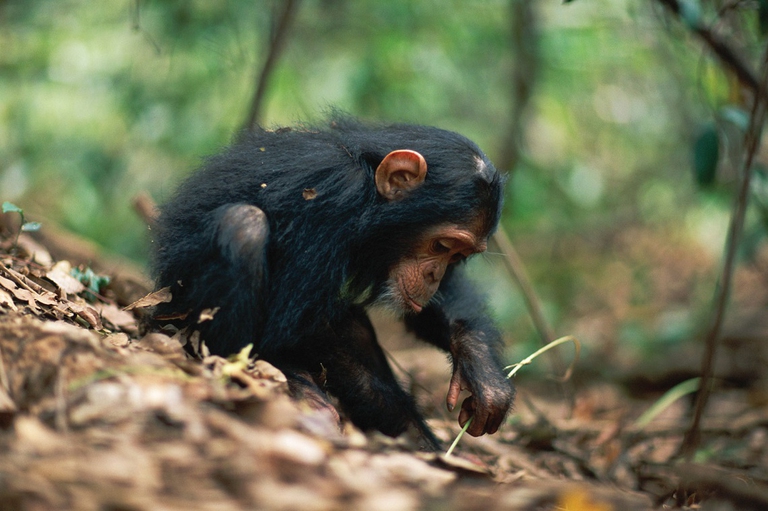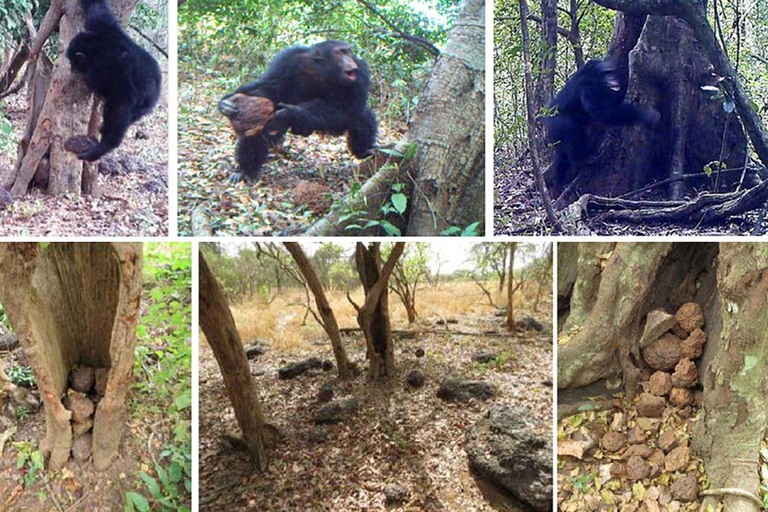
Bumblebees can help plants flower more quickly. However, pesticides, parasites and climate change are putting this key species in serious danger.
Chimpanzees are the closest species to humans, for better or for worse. These primates, with whom we share 98.5 per cent of DNA, are able to use utensils (they use twigs to catch ants from anthills or rocks to crack open fruit), but they could be aggressive and brute, just as we do. A
Chimpanzees are the closest species to humans, for better or for worse. These primates, with whom we share 98.5 per cent of DNA, are able to use utensils (they use twigs to catch ants from anthills or rocks to crack open fruit), but they could be aggressive and brute, just as we do.
A video recorded by a group of researchers of the Humboldt University of Berlin led by Laura Kehoe shows an uncommon behaviour that could reveal another overlap between Homo sapiens e Pan Troglodytes: a sense of the sacred. The aim of the mission was observing an unstudied group of chimpanzees in the wild.
The images, obtained thanks to photo traps installed in the forest of Republic of Guinea, Western Africa, show a male individual getting close to a hollow tree trunk, grabbing a rock and throwing it against the tree. A second video shows a primate accumulating rocks inside a hollow tree trunk.
[vimeo url=”https://vimeo.com/157106967″]
According to the study, published in the Scientific Reports journal, such behaviour may have multiple interpretations. Some researchers suggest it could represent force competitions aimed to define hierarchies among the group’s males, while others think it is a form of communications aimed at reaffirm animals’ supremacy. However, according to Laura Kehoe, there’s an alternative explanation: it could be an ancestral ritual aimed to ingratiate divinities.
The accumulation of rocks made by chimpanzees inside hollow tree trunks could represent the construction of a rudimental sacred place. “What we have found might be more symbolic than a male display, and perhaps more reminiscent of our own past,” said Kehoe. “Even more intriguingly, we may have uncovered evidence of chimps creating a kind of symbolic ritual. Man-made stone collections are commonly observed across the world, including indigenous West African people who have been found to have stone collections at “sacred” trees that look eerily similar to what we have discovered here”.
Such discovery, though, doesn’t provide any answer, but raises fascinating unasked questions: “Are we the only species with spirituality?” To cast light on this mystery as well as on our origins, we must – first of all – protect these animals and their habitats: in the Ivory Coast alone, chimpanzee populations decreased by 90 per cent over the last 17 years.
Siamo anche su WhatsApp. Segui il canale ufficiale LifeGate per restare aggiornata, aggiornato sulle ultime notizie e sulle nostre attività.
![]()
Quest'opera è distribuita con Licenza Creative Commons Attribuzione - Non commerciale - Non opere derivate 4.0 Internazionale.
Bumblebees can help plants flower more quickly. However, pesticides, parasites and climate change are putting this key species in serious danger.
The tapir was reintroduced into Brazil’s Atlantic Forest, the country’s most at-risk ecosystem. The species can play a key role in the forest’s recovery.
The disappearance of 160 species has been declared by the IUCN over the last decade: most had been gone for a long time and their demise can be traced in large part to human impact. The full list of extinct species.
The critically endangered population of the Javan rhino in Indonesia has risen to 72 individuals, as four new calves are registered thanks to camera traps.
Refusing the anthropocentric vision and respecting the laws of ecology is the only way to safeguard the future of our and all other species, Sea Shepherd President Paul Watson argues in this op-ed.
Tigers could go extinct within the next decade. But fortunately the conservation strategy aimed at doubling them by 2022, Tx2, is starting to work.
The Australian Koala Foundation has reported that there are only 80,000 koalas left in the wild. The species looks destined to disappear forever, making it “functionally extinct”.
Bornean orangutans (Pongo pygmaeus) are dying at unprecedented rate, inexorably approaching extinction. And even if we think we aren’t, we actually are and will always be involved in the disappearance of one of the Planet’s most charismatic and most loved species. A new study published in the journal Current Biology reveals that more than 100,000
The underwater world is a treasure chest of life, colours and biodiversity that is yet still partly unknown, in a way that its abysses appear as an obscure and difficult-to-imagine reality. This is why the most beautiful underwater photos are awarded every year by the Underwater Photographer of the Year contest in order to celebrate









